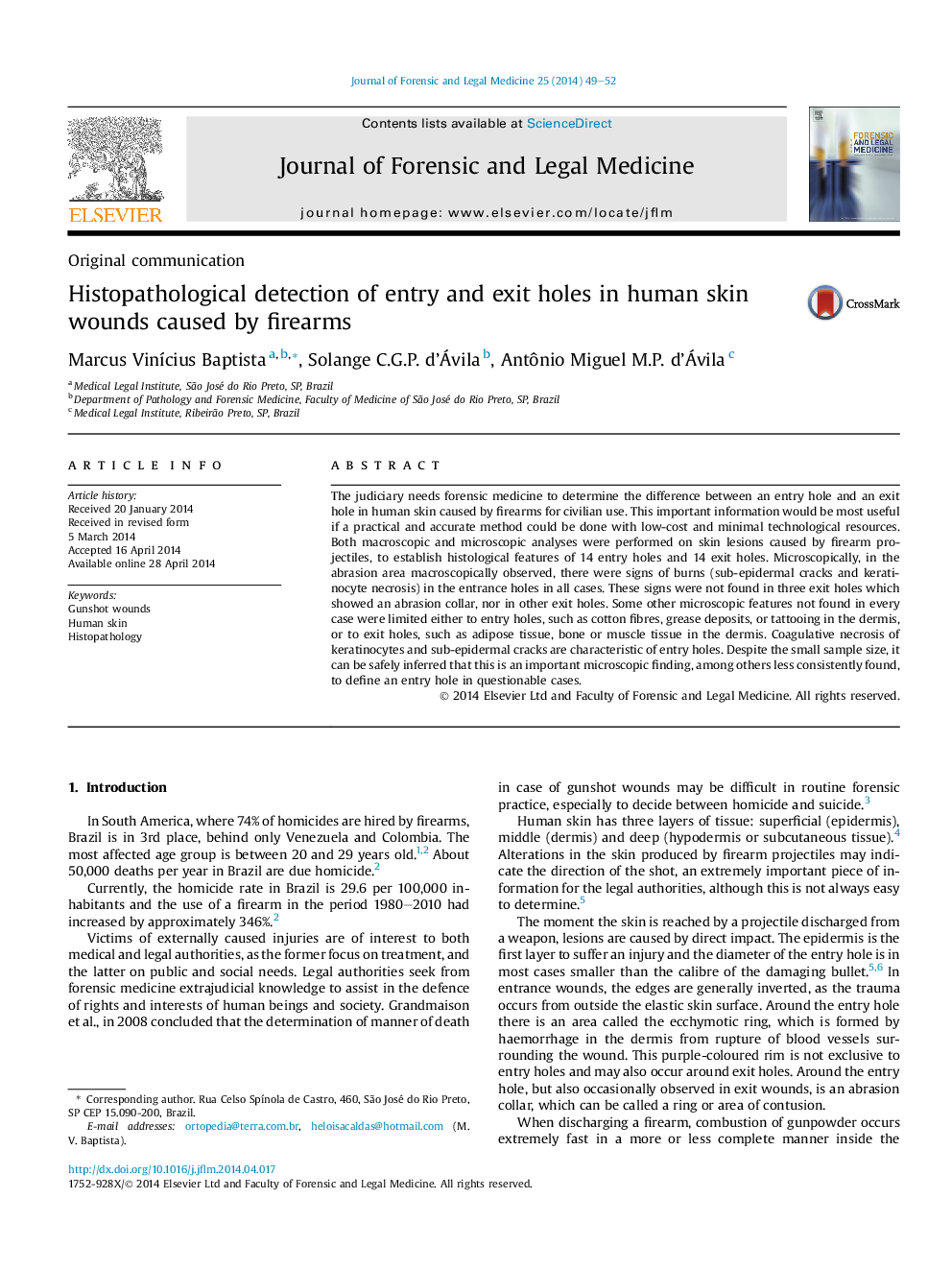| Article ID | Journal | Published Year | Pages | File Type |
|---|---|---|---|---|
| 101933 | Journal of Forensic and Legal Medicine | 2014 | 4 Pages |
The judiciary needs forensic medicine to determine the difference between an entry hole and an exit hole in human skin caused by firearms for civilian use. This important information would be most useful if a practical and accurate method could be done with low-cost and minimal technological resources. Both macroscopic and microscopic analyses were performed on skin lesions caused by firearm projectiles, to establish histological features of 14 entry holes and 14 exit holes. Microscopically, in the abrasion area macroscopically observed, there were signs of burns (sub-epidermal cracks and keratinocyte necrosis) in the entrance holes in all cases. These signs were not found in three exit holes which showed an abrasion collar, nor in other exit holes. Some other microscopic features not found in every case were limited either to entry holes, such as cotton fibres, grease deposits, or tattooing in the dermis, or to exit holes, such as adipose tissue, bone or muscle tissue in the dermis. Coagulative necrosis of keratinocytes and sub-epidermal cracks are characteristic of entry holes. Despite the small sample size, it can be safely inferred that this is an important microscopic finding, among others less consistently found, to define an entry hole in questionable cases.
